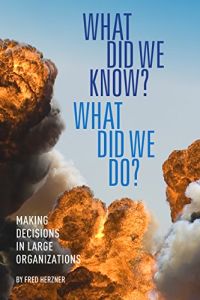Join getAbstract to access the summary!

Join getAbstract to access the summary!
Fred Herzner
What Did We Know? What Did We Do?
Making Decisions in Large Organizations
Smart Business Books, 2018
What's inside?
Instill ethics in your organization, make better decisions and prevent industrial tragedies.
Recommendation
Fred Herzner, engineer and head of GE’s flight safety program from 1995 to 2003, believes he might have been able to prevent the loss of 111 lives in a 1989 plane crash if he’d made one decision differently three decades ago. His lack of action has haunted him, leading to this personal investigation of how people and organizations make consequential decisions and how they might do better. Herzner provides an important warning to leaders to never grow complacent nor overvalue money, results or deadlines at the cost of ethics and safety. He offers a principles-based structure and a methodical strategy for making better decisions. Herzner’s heartfelt, honest guide speaks to all leaders whose decisions affect people’s health and safety.
Summary
About the Author
Fred Herzner served as chief engineer and head of GE’s flight safety program from 1995 to 2003. Since retiring – and spurred by his involvement with the 1989 United Airlines Flight 232 disaster – he has focused on safety, organizational culture and the decision-making processes surrounding corporate ethics.
















Comment on this summary